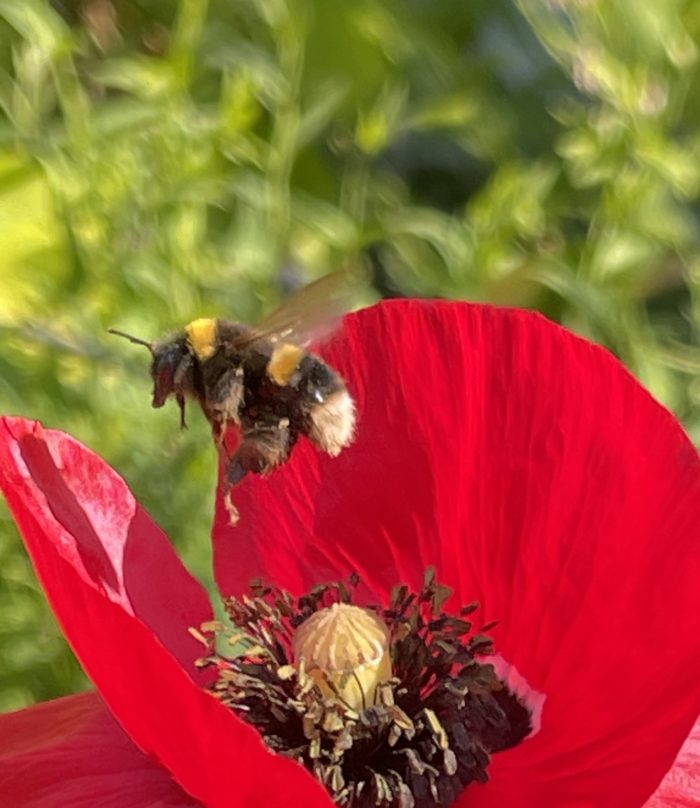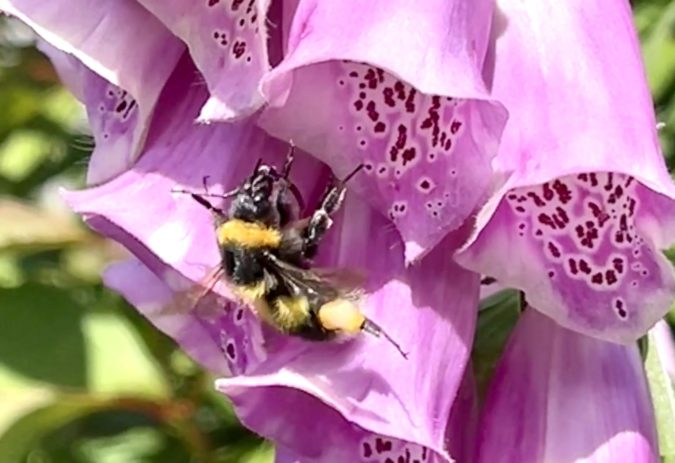Flowering plants and pollinators

Plants have existed for hundreds of millions of year - as algae, mosses, liverworts, ferns but flowering plants only appeared about 140 million years ago. The exact timing of their appearance is a matter of some debate (see article) They have been a massive evolutionary success, there are perhaps 300,000 to 400,000 species world wide. They reproduce using pollen. This is used to fertilise the ovules and produce viable seeds. Most plants rely on insects to transfer this pollen to the ovules, indeed over 80% of flowering plants have relied on insects for this service. To this end, flowering plants (Angiosperms) have evolved a number of inducements to attract insects : colour, scent and nectar.
When we think of pollinators, we generally tend to think of bees, bumblebees, hover flies. But when flowering plants first evolved, fossil evidence suggests that many of these flowers were quite small so it is probably that the first pollinators were also quite small, and hence able to access these small flowers. The first pollinators were probably small flies, midges or beetles (more than 77,000 beetle species are estimated to visit flowers). Quite when bees (and their pollen collecting activities) evolved is not known.

A recent analysis of the "family tree" of the families of flowering plants indicates when different plant families evolved and when various forms of pollination emerged. Insect pollination is / was clearly the most common method of pollination, and was probably the first means of pollination. This analysis also indicated that other means of pollination (involving small mammals, birds, bats) have evolved several times, as has wind pollination. Wind pollination seems to have evolved more often in open habitats and at higher altitudes , whereas animal pollination is associated with closed canopy tropical forests.

The pollen of insect pollinated flowers is significantly different to that of wind pollinated species. Flowers that are insect pollinated tend to produce pollen that is heavy, 'sticky' and protein-rich. Pollen is an important constituent of the diet of many insects. Wind pollinated species by contrast produce large quantities of pollen, the grains being light and small.
Comments are closed for this post.
